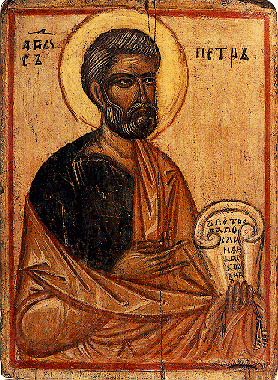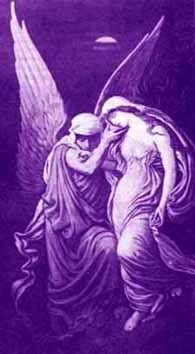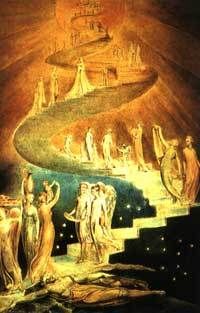The Story of the Dead Sea Scrolls
The story of the Dead Sea Scrolls begins in 1947, when – so the tale goes – a Bedouin shepherd found a collection of apparently ancient scrolls in a cave above Khirbet Qumran, near the north end of the Dead Sea. Over the course of the next year, seven scrolls from the cave reached scholarly hands. When examined by experts, the importance and antiquity of the find was quickly understood. For starters, included among these first seven scrolls was a fairly well-preserved copy of the biblical book of Isaiah, soon determined to be the oldest complete manuscript of a Hebrew scripture yet discovered and dating to before 100 BCE.
Another of the seven scrolls was of a more curious nature. Now named by researchers the “Community Rule” (it was first translated and published under the title "Manual of Discipline"), this large and fairly compete manuscript represented a type of Jewish religious writing previously unknown. It appeared to be a document related to the conduct and beliefs held within a sectarian Jewish community sometime between 150 BCE. and 70 CE. – a community seemingly very much like the Essenes described in antiquity by the Jewish historian Josephus.
In 1949 a team lead by Roland de Vaux (an academic and Dominican priest who would dominate Dead Sea Scroll studies for the next two decades) surveyed the cave at Qumran where the scrolls had been found, discovering pottery shards and several more manuscript fragments. Two years later de Vaux directed archeological excavation of the Khirbet Qumran ruins located just below the cave.  Between 1952 and 1956 ten additional caves containing scroll fragments were discovered near Qumran, almost all located by Bedouins who made a business of scouring through the area. The most impressive cache – discovered again by Bedouins working on at Qumran after de Vaux's 1952 expedition – was located in a man-made cave less than 200 yards from Khirbet Qumran. Named "Cave 4" (in order of its discovery), it contained about 15,000 scroll fragments, identified eventually as the remains of 574 separate manuscripts.
Between 1952 and 1956 ten additional caves containing scroll fragments were discovered near Qumran, almost all located by Bedouins who made a business of scouring through the area. The most impressive cache – discovered again by Bedouins working on at Qumran after de Vaux's 1952 expedition – was located in a man-made cave less than 200 yards from Khirbet Qumran. Named "Cave 4" (in order of its discovery), it contained about 15,000 scroll fragments, identified eventually as the remains of 574 separate manuscripts.
Early in this period of discovery an hypothesis about the source and authors of the scrolls had formed in the minds of de Vaux and his associates. In retrospect, it was only a working hypothesis. But it became a story fixed in history. Faced with several pieces of a puzzle – ancient Hebrew scrolls stored in a cave, a manuscript among those scrolls tentatively identified as the rule of an Essene community, and the ruins of an ancient community's dwelling directly below the cave – de Vaux fit the puzzle’s pieces into a temptingly obvious picture: The Dead Sea Scrolls were the library of an Essene community that once occupied the ruins at Khirbet Qumran. Details disclosed from early excavations at Khirbet Qumran all worked neatly into the story: the ruins contained a large room that would have been a scriptorium (a term previously used to describe rooms in medieval monasteries); remnants of long tables were found that could have served for copying lengthy scrolls; and three ink wells were found.
The "Qumran Hypothesis" – attributing the origins and authorship of the scrolls to an Essene community at Khirbet Qumran, a theory perhaps more accurately called the "Qumran-Essene dogma" – became a party line in Dead Sea Scrolls studies for the next 40 years. The integrity of this thesis was buttressed by highly restricted access to the scrolls. Manuscripts were parceled out for study and translation to a small clique of academics, directed by de Vaux.
In 1955, literary critic Edmund Wilson published an influential series of articles in The New Yorker magazine (later release in book form) which help cement in popular imagination this accepted story of the Dead Sea Scrolls and their creators, the Essenes who dwelt at Khirbet Qumran. Indeed, Wilson took the tale a tantalizing step further, fleshing out the possibility (broached in 1950 by the French academic André Dupont-Sommer) that the first Christians may have borrowed ideas from the people of the Scrolls. Similar to the first Christians, Wilson explained, the Essenes at Qumran had honored an anointed Teacher of Righteousness, performed ritual washings or "baptisms", and shared a sacred meal. Popular interest in the Scrolls has continued ever since to be stimulated by conjectured links between the Qumran scrolls and early Christianity.
Reconsidering the Essene-Qumran Hypothesis
In the last two decades of the twentieth century, several objections to the Qumran-Essene thesis of the Scrolls' origins were voiced within the academic community. Even louder objections arose over continued refusal of the Dead Sea Scrolls "team" to allow all qualified scholars open access to unpublished materials in the collection. After forty years, Scrolls research remained the exclusive domain of a small, self-selected team of scholars. Worse still, over several decades the group had made woefully little progress publishing material from the collection, particularly the large cache of scroll fragments discovered in Cave 4. The whole project was becoming an academic scandal, intermittently punctuated by conspiracy theories suggesting occult purposes motivating sequestration of the yet unpublished materials.
Whatever its various motives, the monopoly on access to the Dead Sea Scrolls collection came to an end in 1991 when the Huntington Library announced it would make available without restriction a complete microfilm copy of the Scrolls in its archives. Soon after, Emanuel Tov, director of the Scrolls project, announced open access and right of publication would be granted to all material in the official collection.
 During the last decade, the pace of DSS publication has picked up considerably. So, too, has disagreement about the Scrolls' origins and authorship. Dr. Norman Golb (Professor of Jewish History and Civilization, University of Chicago) has been among the most vociferous opponents to the classic story of the Scrolls' origins. Many of his objections, summarized in his 1995 book, Who Wrote the Dead Sea Scrolls?, seem to be receiving some wider accord.
During the last decade, the pace of DSS publication has picked up considerably. So, too, has disagreement about the Scrolls' origins and authorship. Dr. Norman Golb (Professor of Jewish History and Civilization, University of Chicago) has been among the most vociferous opponents to the classic story of the Scrolls' origins. Many of his objections, summarized in his 1995 book, Who Wrote the Dead Sea Scrolls?, seem to be receiving some wider accord.
The "Qumran-Essene dogma" was originally developed to explain a relatively small number of newly discovered documents, including texts in a previously unknown literary style that apparently represented a divergent, "sectarian" voice within Judaism. Early studies of the DSS identified this voice as Essene, and viewed the Scrolls as a remnant of the sect's library. As the numbers and kinds of scrolls discovered multiplied however, critics argued that the probability all these manuscripts had been collected, copied, and archived by a single Essene community living at Qumran dwindled. Over 800 distinct documents have been identified among the scroll fragments found in the caves of the Judean desert. A large number of these are previously unknown works written in several styles. Hundreds of different scribal hands are found in the manuscripts, including fragments in Greek script. In addition, as Dr. Golb argues, the collection is almost devoid of the type of "historical autographs" – works in an author's own hand, such as personal and official letters, lists of names, inventories, deeds of ownership – that might link a cache of documents with a specific source community. Objective archeological scrutiny of the Qumran site also suggests it may have functioned in ancient times as a military fortress, and not principally or exclusively as a religious and scribal commune. Persuaded by such arguments, several scholars have completely rejected the traditional "story of the Dead Sea Scrolls".
Which brings us back to the questions asked by DSS researchers fifty years ago: Who wrote the Dead Sea Scrolls, and who stored them in the caves? At present, there is no generally accepted answer to either question. Some scholars now argue that the scrolls possibly came from one or more ancient Jewish collections, including the Temple library in Jerusalem. They were copied by many different hands and represent several types of Jewish literature produced in the intertestamental period, including some apocalyptic and sectarian writings authored by communities that might be called "Essenes". During the Jewish uprising and before destruction of Temple in 70 CE. – so goes this tentative argument – they were transported to the caves around Qumran for safety. Despite such arguments (and they remain arguments, not proofs), many highly reputable scholars continue to affirm that an Essene community existed at Qumran and produced or collected many of the documents we call the Dead Sea Scrolls.
More Reading:GNOSTIC SOCIETY LIBRARY










No comments:
Post a Comment